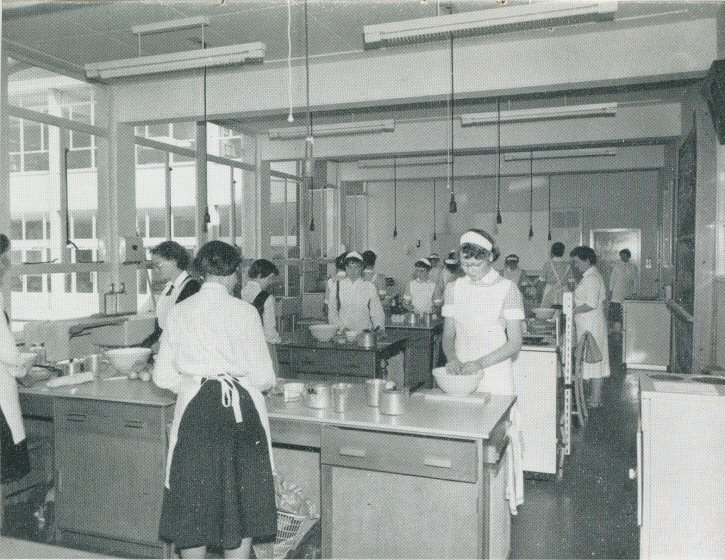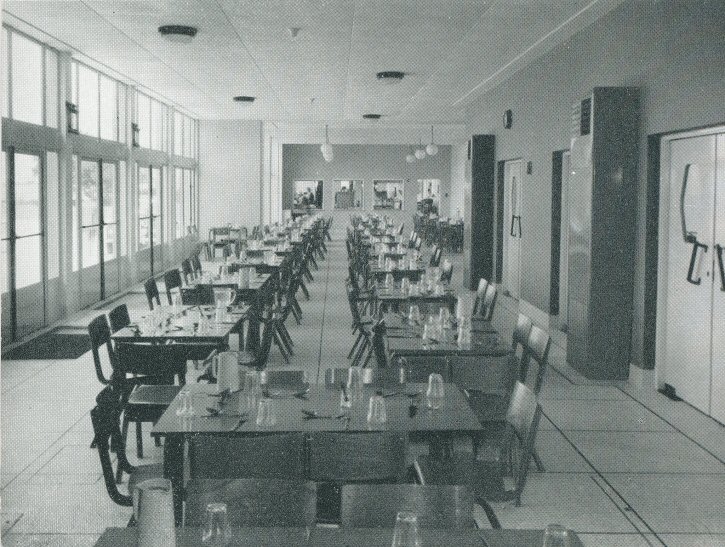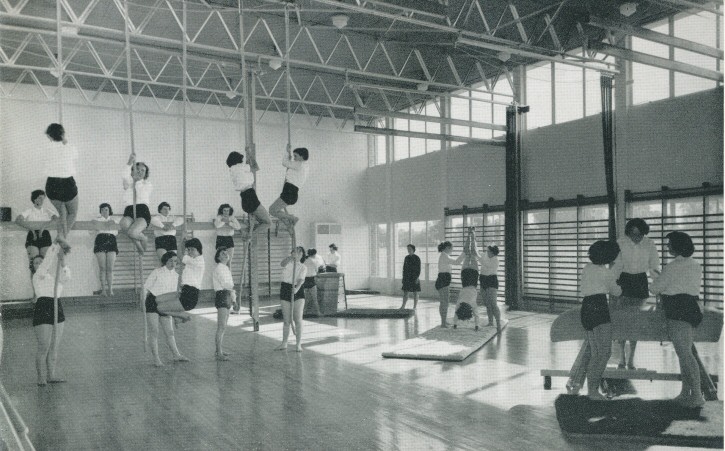The decision to establish a High School for Girls at Ely
was made on 24th July, 1904, at a meeting of the Ely
Sub-Committee of the County Education Committee.
The Sub-Committee met in a house now occupied by the
Bishop and at the meeting it was agreed not only to establish
the school but also to purchase premises which until 19th
July, 1957, served to accommodate the pupils.
The buildings purchased for school use were formerly the
Old Fen Offices, the Headquarters of the Bedford Level
Corporation.
The school was formally opened on 18th May, 1905, with
forty-two children and since that date has expanded to its
present size with nearly 400 pupils on roll.
Grammar School accommodation for Ely and the surrounding
area is provided under special arrangements made by the Isle
of Ely and Cambridgeshire Local Education Authorities; for
boys at the Cambridgeshire Grammar School at Soham and for
girls at the Isle of Ely High School at Ely.
Ely High School therefore serves not only the southern
parts of the Isle of Ely but also the northern parts of the
administrative County of Cambridgeshire.
The new buildings have been designed as a two form entry
Secondary Grammar School for 360 girls, sixty of them being
sixth form pupils.
The accommodation provided, which is based on the
regulations of the Ministry of Education, includes nine
classrooms, seven practical rooms comprising needlework,
housecraft, craft and art rooms and biology, physics and
chemistry laboratories, library, assembly hall with stage,
gymnasium, dining area, kitchen, medical inspection room and
staff accommodation.
The general teaching and practical rooms are planned
compactly in a two-storey block. The spacious main entrance
hall gives direct access to the assembly hall, but has a dual
purpose, serving also as additional dining accommodation.
A sliding folding screen is provided between it and the
dining hall. The assembly hall and the gymnasium with its
ancillary accommodation are situated in a single storey block
at the back of the school away from the classrooms and
practical rooms to obviate any interference by noise to these
latter rooms, and are so planned that the changing rooms can
also be used in conjunction with the stage and assembly hall.
There is also direct access to the changing rooms from the
playing fields.

Housecraft Room

Dining Room
Construction
The school is generally of steel-framed construction
with the external framework encased in concrete. Some
load-bearing brick walls are provided. The first floor
decking of the two storey block is mainly precast,
prestressed concrete beams. The roof of the school is of
wood. wool slabs, all supported on the steel framework. Roofs
are covered with bituminous roofing felt finished with
Derbyshire white spar chippings. Walls internally on the
ground floor are of brickwork and on the first floor of
lightweight hollow clinker concrete blocks all plastered and
painted. Floors in the teaching and practical rooms and staff
rooms and circulation areas on first floor are thermoplastic
tiles, the main entrance hall, dining hall and staircases
terrazzo paving, and elsewhere coloured concrete tiling. The
assembly hall, stage and gymnasium floors are maple hardwood.
Ceilings are generally insulating fibre board, the remainder
are plastered.
Daylighting
Large metal windows are provided supplemented by roof
lights where necessary to achieve even lighting.
Heating
Heating is by low pressure hot water in radiators,
heater cabinets and pipes, supplied from oil-fired boilers
fitted with fully automatic
thermostatic controls. Hot water is provided to all wash-hand
basins and showers from an independent boiler.
Power and Artificial Lighting
In the classrooms and library the electric light
fittings are fluorescent tubes. Elsewhere tungsten lamps are
used with glass shades which have been carefully selected to
give the best diffusion and to harmonize with the character
of the building.
A fully equipped stage lighting system is provided
complete with colour mixing and dimmer control. The main
lighting of the assembly hall is also controlled by dimmers.
Secondary lighting is provided in the assembly hall, stage
and entrance hall in case of the failure of the public
supply.
Wireless is transmitted to loudspeakers in all classrooms,
assembly hall and gymnasium from a central radio and sound
equipment panel in the secretary's office. This panel also
has attachments for a microphone and microphone points are
provided on the stage.
Electric clocks operated through a master clock are
provided at suitable points in the school. The physics
laboratory is fitted with an electric low-voltage apparatus
having socket outlets to benches for experimental purposes
both in A.C. and D.C. currents.
The housecraft room is fully equipped with four electric
and four gas cookers, electric wash boiler, washing machine
and a refrigerator.
The kitchen where the school meals are prepared is mainly
operated with gas cooking equipment and gas points are
provided in all laboratories.
Decorating
The decorating scheme throughout has been carefully
chosen to give a bright and enlivening atmosphere.
Playing Fields
Extensive playing fields adjoin the school.

The Gymnasium


